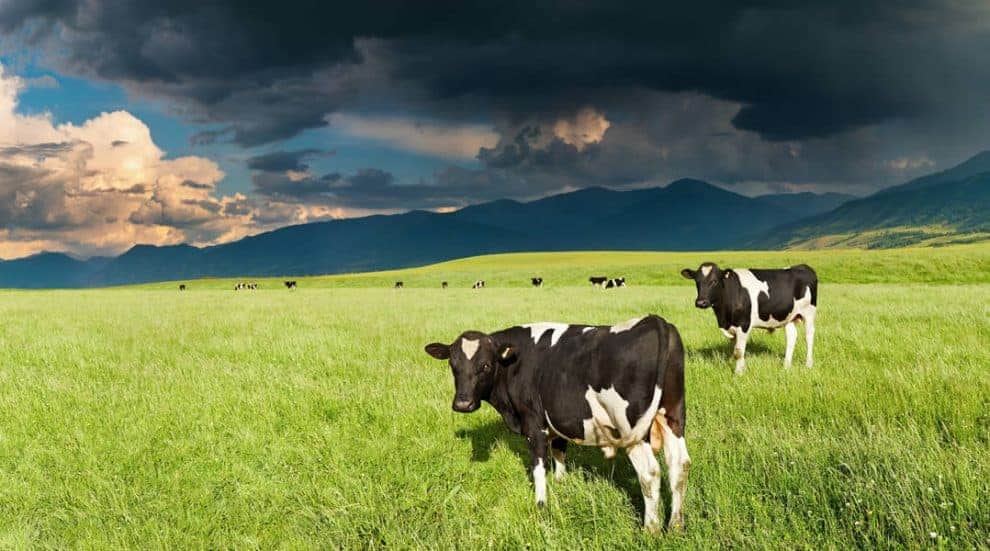Warmer weather doesn’t always mean flowers and sunshine. Warm fronts in the atmosphere create breeding grounds for severe thunderstorms that can produce strong winds, flooding, large hail and even tornadoes. These conditions can be dangerous for horses, cattle, and other animals, especially hoofed animals, commonly found on ranches. It can also destroy barns and homes.
In severe weather, preparation is key. Normally, thunderstorms are predicted at least 24 hours in advance, so there are many things you can do to keep your animals, and yourself, safe and secure.
Evaluate your property and structures. First and foremost, see how prepared you are. How sturdy is your barn? Is your fencing secure? Fix any loose siding, fence posts, roofing, etc, and secure any loose materials that could become hazardous if airborne.
Keep extra supplies of food and water. There may be a long period of time when you cannot tend to your animals. Make sure they are covered with enough supplies to sustain themselves through the storm.
Fence off single trees and restrict access to other dangerous areas. Animals tend to take shelter underneath trees. One single tree is often ideal for lightning strikes. If animals cannot be put in a barn or other type of shelter, they are better off congregating underneath a grove of trees. In flooding, you may need to move your cattle and other animals to higher ground.
Ensure proper animal identification. All livestock should have visible identification numbers. Flooding and other hazardous weather can cause animals to migrate and end up lost. Immediately after the storm, inventory all animals and identify any that are missing. Inform neighbors to be on the lookout for any animals that are lost.
Observe and inspect when it calms. During the calm after the storm, check the animals for any sickness, wounds, or other signs of disease. Inspect food and water sources to make sure they didn’t get contaminated from flying debris or chemicals.
Planning ahead and taking the proper steps will give your ranch and its inhabitants a fighting chance during severe weather. Protecting these animals, your assets, is essential to your business and livelihood.
This content may not be used or reproduced in any manner whatsoever, in part or in whole, without written permission of LANDTHINK. Use of this content without permission is a violation of federal copyright law. The articles, posts, comments, opinions and information provided by LANDTHINK are for informational and research purposes only and DOES NOT substitute or coincide with the advice of an attorney, accountant, real estate broker or any other licensed real estate professional. LANDTHINK strongly advises visitors and readers to seek their own professional guidance and advice related to buying, investing in or selling real estate.










Add Comment